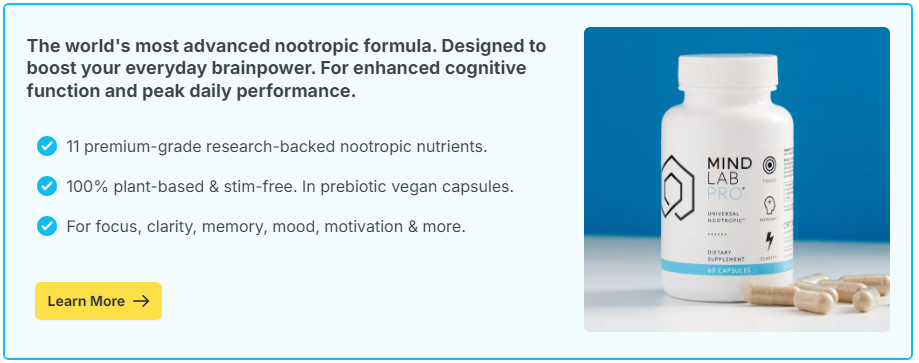
Remember that wide-eyed wonder you once carried – the endless questions, the fascination with ordinary things, the way the world seemed filled with secrets waiting to be unlocked? That wasn’t just childhood whimsy. It was your brain laying down tracks that could guide your thinking for a lifetime.
Curiosity isn’t just cute. It’s cognitive gold. And long after the crayons are boxed away and the sandbox sits unused, the imprint of those early inquisitive years continues to shape how we learn, solve problems, and engage with the world. These echoes – or cognitive shadows – remain with us, quietly influencing adult intelligence, decision-making, and creativity.
Contents
The Neuroscience of Early Curiosity
The curious child isn’t simply collecting trivia. They’re building a neural framework for thinking. The more questions asked, puzzles explored, or rocks overturned, the more pathways form in the brain. These early interactions with the world literally sculpt the mind’s architecture.
Curiosity and Brain Plasticity
During childhood, the brain is especially plastic – meaning it’s more adaptable and responsive to new experiences. This is when foundational habits of thought are laid. Curious children tend to:
- Engage more actively with their environment
- Develop broader vocabularies and stronger reasoning skills
- Retain information more easily due to emotional engagement
These benefits don’t vanish with age. They become part of the brain’s operating system. Curiosity-driven learning in childhood builds the mental scaffolding that supports critical thinking and innovation later on.
Dopamine: The Fuel Behind the Fire
When a child asks “Why?” and receives a satisfying answer, the brain releases dopamine – a neurotransmitter tied to reward and motivation. This chemical reinforcement makes curiosity feel good. Over time, the brain begins to seek that reward through more exploration, creating a feedback loop that can persist well into adulthood.
This natural curiosity-reward system is one reason some adults turn to nootropics or brain supplements. These are sometimes used to support motivation, focus, and mental stamina – all qualities tied to dopamine pathways established early in life.
The Educational Echo: How School Shapes Inquiry
For better or worse, education plays a powerful role in nurturing or muting early curiosity. A system that encourages questions and creative thinking can strengthen a child’s cognitive momentum. But if curiosity is met with rigid testing or rote learning, it may wither.
Inquiry-Based Learning vs. Memorization
Children taught through inquiry-based methods – where they’re encouraged to ask questions and seek answers – often retain their curiosity longer. They associate learning with discovery rather than performance. This association persists into adulthood, making them more adaptable and open-minded thinkers.
By contrast, environments that prioritize grades over growth often train children to seek the “right answer” instead of a deeper understanding. The cognitive shadow left behind in these cases can be one of hesitation, fear of being wrong, and reduced creative risk-taking.
Stories from the Classroom
Consider two students, Amy and Jordan. Amy’s fifth-grade teacher celebrated questions. Her class once spent an entire week exploring the history of bubblegum, just because someone asked about it. Years later, Amy is a product designer who’s always probing customer needs.
Jordan, on the other hand, had a stricter environment. Questions were seen as distractions. He learned to keep them to himself. As an adult, he’s competent but often hesitates to challenge assumptions or suggest bold ideas. His early curiosity never got the encouragement it needed to grow roots.
Adult Intelligence: The Legacy of Early Wonder
Not all curious children become inventors or authors – but most develop a lifelong capacity for learning and adaptation. That’s the true legacy of early curiosity: the mental flexibility to navigate life’s changing terrain.
Curious Adults Learn Differently
Adults who were encouraged to be curious as children tend to:
- Approach unfamiliar problems with confidence
- View mistakes as part of the learning process
- Gravitate toward careers that involve research, innovation, or education
This doesn’t mean it’s too late for anyone who missed that window. But for those who grew up asking questions and receiving encouragement, the cognitive shadow they carry gives them a unique edge. They aren’t just recalling facts. They’re constantly reframing what they know, integrating it with new ideas.
The Adult Brain and Lifelong Curiosity
The adult brain can still form new neural connections – a process called neurogenesis. This is often sparked by novelty and engagement, the same forces that fueled childhood curiosity. Adults who regularly seek out new challenges, skills, or knowledge tend to have healthier cognitive function later in life.
To support this process, many adults turn to routines that challenge their thinking. They may also explore the benefits of certain brain health supplements, which can aid in focus and mental energy – especially during cognitively demanding tasks.
Reigniting Curiosity in Later Life
If your childhood curiosity was stifled or lost along the way, don’t worry. It’s not gone. It’s just sleeping. And it doesn’t take much to wake it up.
Small Acts That Spark Curiosity
- Ask “What if?” questions during daily tasks
- Learn something unrelated to your job, like birdwatching or calligraphy
- Change your routine to expose yourself to new stimuli
- Spend time with children and observe how they explore the world
These small changes shift the brain into a more open, receptive state. Over time, curiosity becomes a habit again, not just a distant childhood trait.
Curiosity as a Form of Mental Fitness
Just like lifting weights strengthens muscles, exercising curiosity strengthens cognition. It can help with memory, mood, and problem-solving. Some people support these mental workouts with nootropic formulas aimed at improving focus, clarity, and mental stamina – tools to help the adult brain keep up with its renewed sense of wonder.
The Shadows We Carry – And How They Guide Us
The questions you asked as a child – Why is the sky blue? Where do ants sleep? What makes a word funny? – may seem trivial now. But they were practice runs for a much bigger mental game. They helped wire your brain for lifelong learning, exploration, and critical thought.
And even if those shadows grew dim over the years, they never disappeared. They still inform how you process the world. They shape your decisions, your interests, your beliefs. They may even influence the way you daydream or how you handle uncertainty.
So don’t ignore them. Revisit them. Let them guide you back into a mindset where learning is joyful, where questions are more important than answers, and where the pursuit of knowledge never has to end.

